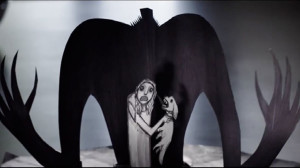 CFP for Edited Collection: Monstrous Moral Messengers: Supernatural Figures in Children’s Picture Books and Early Readings
CFP for Edited Collection: Monstrous Moral Messengers: Supernatural Figures in Children’s Picture Books and Early Readings
Picture books and early readers carry all the weight of parental authority, and are essential tools in the learning process for our children. With their bright pictures, they perform their function of holding the child’s attention quite well, and they are accessed freely and repeatedly. For more information about books click on view more. They offer children not only hours of sanctioned entertainment and carefully chosen words and concepts, they also introduce our youngest children to specific cultural norms and belief systems. What role then does the supernatural character play for children learning to “read” and interpret the values in the interplay of images, words, and authority? Is there a difference, for the child, when the protagonist shown in the picture is a werewolf, fairy, or ghost? What message is offered to a viewing child when the image of the antagonist is a vampire, troll, or god? Does the very fact that the character is supernatural alter the reading? And is it meant to alter the meaning? At this point, there is no text addressing these questions; although there is an increasing amount of scholarship regarding how the various supernatural characters (and monstrous children) reflect various adult issues when they appear within film and television. I think it is perhaps more important to understand what messages are being offered our children through the same, albeit simplified, medium of pictorial texts which offer a sanctioned teaching medium for learning the semiotics which children are praised for interpreting. This book is meant to begin the exploration of what cultural norms and morals are being offered our children in images via this medium since picture books and early readers are not just sanctioned, but encouraged.
For this collection, papers from any discipline are welcome. Focus is, however, exclusively on supernatural figures in children’s picture books and early readers. (The only exclusions are aliens, and magical entities such as talking trees, talking owls, etc.) Issues which might be explored by contributors include (but are not limited to):
* The primary purpose of the supernatural character[s] within a specific text, or series, and what it/they are teaching children
* The use of a supernatural character as harmless entertainment (is there really a picture book which doesn’t offer a moral of some sort?)
* The use of a ghost, vampire, werewolf, or other supernatural, as a stand-in for diversity. Do they work as a stand in? Why or why not? (Why not just depict the human “other?”)
* The way in which a specific moral is being offered through the use of a supernatural character
* The way the supernatural character will potentially impact the child’s view of their world
* Comparative discussion regarding how the morals in early monster tales (such as Grimm’s) are now being revised to offer a differing moral – and how/why the changes reflect new norms
Questions to get you thinking:
* Why are so many supernatural characters green?
* Are some supernatural characters depicted as “bad” while others are “good?”
* Does the color scheme used impact the child’s reading of the characters?
* In what way does adult encouragement regarding “reading” the text impact the child’s reading of the supernatural character[s]?
* Is there a different reading/interpretation of the text offered the child when the supernatural being is the protagonist or the antagonist?
Please submit a 300 word abstract and a brief scholarly bio to Leslie Ormandy at monstrousmessengers@gmail.com. The closing date for submissions is June 10, 2015. Notice of acceptance will follow by June 25, 2015 (and will include a listing of helpful readings). Complete 7000 – 8000 word essays are to be submitted by December 10, 2015 in MLA format with US spelling and punctuation.





There are no responses yet